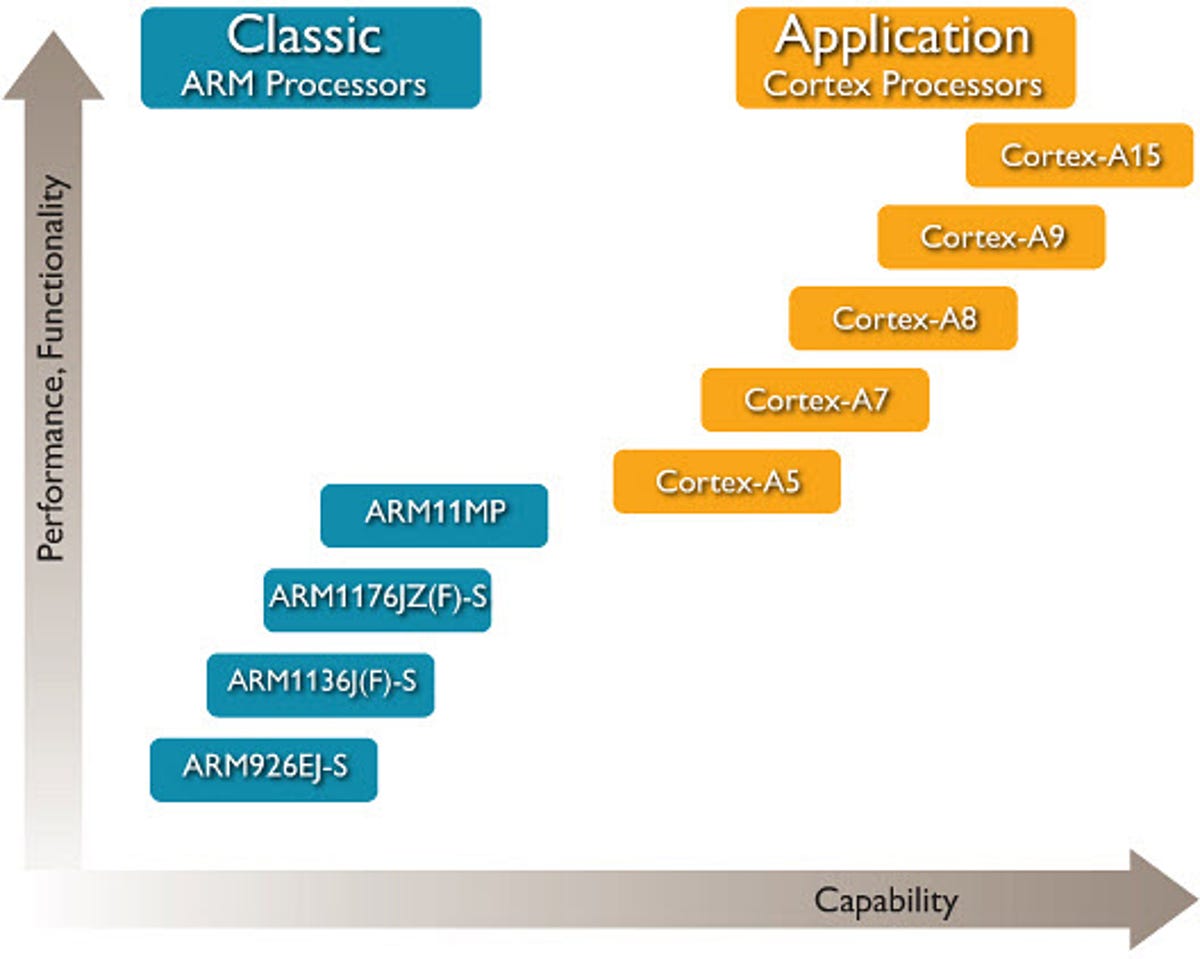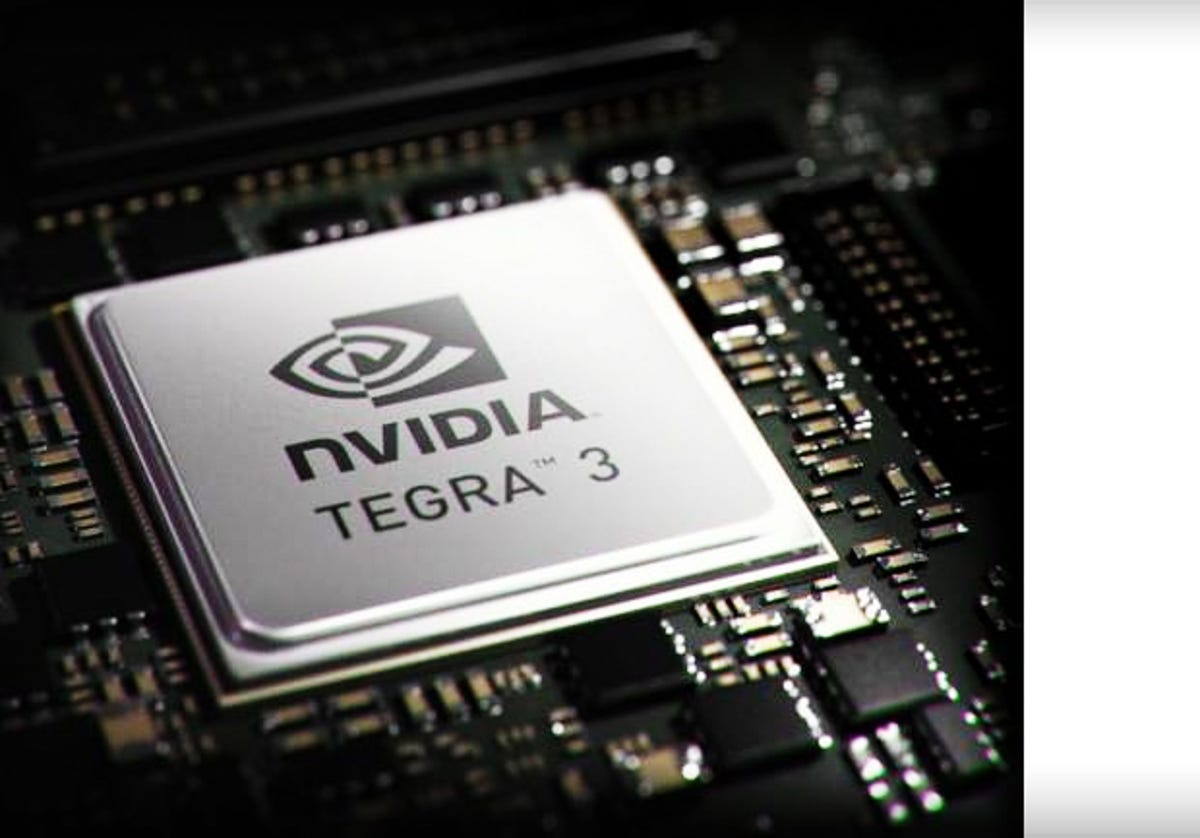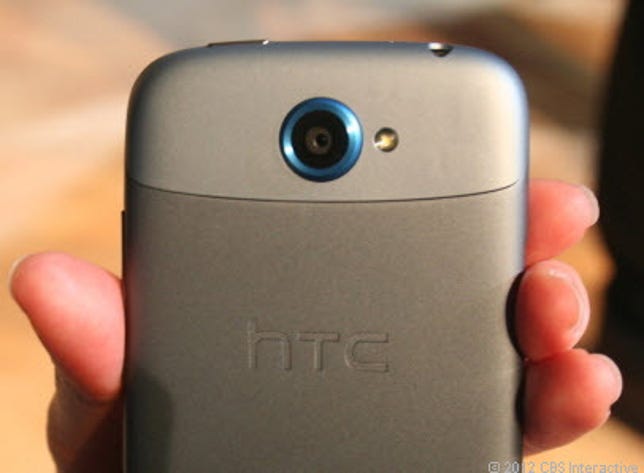Editors’ note: This article originally posted on April 8, 2012, and was updated on December 19, 2012.
Open up your wallet today and there are no fewer than five smartphones you can buy running on quad-core processors. Seven months ago, there was one, the HTC One X, and only if you bought the international version, which lacked the 4G LTE speeds coveted by U.S. phone-buyers.
After CES next month, expect the number of announced quad-core devices to double as the core war continues to heat up.
By summer, you may turn up your nose at perfectly fast devices running on dual-core chipsets, wondering if you should saddle yourself with something so “slow.” After all, the more processing power, the better the phone, right?
#mytable body {
font: normal 11px auto “Trebuchet MS”, Verdana, Arial, Helvetica, sans-serif;
color: #4f6b72;
background: #E6EAE9;
}
#mytable a {
color: #c75f3e;
}
#mytable {
width: 620px;
padding: 0;
margin: 0;
}
#mytable th {
font: bold 13px “Trebuchet MS”, Verdana, Arial, Helvetica, sans-serif;
color: #4f6b72;
border-right: 1px solid #C1DAD7;
border-bottom: 1px solid #C1DAD7;
border-top: 1px solid #C1DAD7;
letter-spacing: 2px;
text-transform: uppercase;
text-align: center;
vertical-align:middle;
padding: 6px 6px 6px 12px;
background: #CAE8EA;
}
#mytable .nobg tbody {
border-top:none;
}
#mytable td {
border-right: 1px solid #C1DAD7;
border-bottom: 1px solid #C1DAD7;
background: #E6EAE9;
padding: 6px 6px 6px 12px;
color: #4f6b72;
}
#mytable th.spec {
border-left: 1px solid #C1DAD7;
border-top: 0;
background: #fff;
font: bold 11px “Trebuchet MS”, Verdana, Arial, Helvetica, sans-serif;
}
| Who’s who in quad-core (Dec 2012) | Major quad-core phones | Major quad-core tablets |
|---|---|---|
| Qualcomm (Snapdragon S4 Pro) | HTC Droid DNA, LG Nexus 4, LG Optimus G, Aquos Phone Zeta, Xiaomi MI2 | None |
| Nvidia (Tegra 3) | HTC One X, HTC One X+, LG Optimus 4X HD, LG Optimus Vu, ZTE U950, Fujitsu Arrows Z ISW13F | Google Nexus 7, Microsoft Surface RT, Asus Transformer Pad Series, Acer Iconia Tab series, Toshiba Excite series, Sony Xperia Tablet S, Fuhu Nabi 2 and Nabi XD, Lenovo IdeaPad Yoga 11 |
| Samsung (Exynos 4 Quad) | Samsung Galaxy Note 2, Lenovo LePhone K860 | Galaxy Note 10.1, Google Nexus 10 |
| *This chart represents more major product launches, but is not globally exhaustive. | ||
Maybe not. A tremendous amount of detailed architecture and circuitry go into processor chips, which can make understanding their exact effects on performance a serious undertaking for most. (Note: If you could teach a class on processors, this article isn’t for you.)
In the end, your smartphone’s internal performance boils down to more than the number of cores. Instead, it depends on a delicate balance involving everything from your base chip and batteries to your operating system, and even on the people who code your favorite apps.
Quad-core is great in theory


Brian Bennett/CNET
Read more Smartphones Unlocked
- Your smartphone’s secret afterlife
- Your next carrier: Prepaid or contract?
- How phones are ‘optimized,’ and why you should care
- Smartphone batteries: Problems and fixes
- 5 things you didn’t know about data testing
- The near future of smartphones
- The ABCs of smartphone screens
- Why more camera megapixels aren’t better
The theory of multicore processors is this: if you can divvy up a task among more than one processor, you can finish up faster.
Roughly imagine it as an assembly line production: instead of having one person do everything on their own (single core), you can have each member of a team do their part and finish faster as a whole (multicore).
Beyond promising dramatically faster performance, quad-core chip-makers may also claim better battery life. Since each core works less hard to accomplish a task, it draws less power than if fewer cores strained with heavier workloads apiece. The higher the battery draw per core, the faster you drain your battery.
In the real world, that means your phone should get swifter thanks to the assembly line analogy, while depleting the battery slower. In addition, screen resolution should look sharper, photos and apps will load faster, you can stream HD videos smoother, and you’ll be able to play games like a demon.
Sounds good, right? Right. But the performance you get out of a chip isn’t as simple as just piling on the cores.
Myth No. 1: A chip is a chip is a chip
At the heart of every mobile application processor is the even more elemental ARM processor that forms the building block for the final product we know as the quad-core chip (really, an entire system on a chip, often called an SoC.)
ARM is the company that masterminds the layout design of the chips inside Android phones, Windows phones, and even Apple’s iPhone 4S. Chipmakers license the set of instructions (and even the right to tweak these blueprint instructions), to integrate into their own final chip design.


ARM
Differentiation comes two ways. ARM designs different chip models with different architectures — like the A8, A9, and A15 chips — each more capable than its predecessor.
As a starting point, says Samsung’s Nick DiCarlo, vice president of product planning, you have to compare the architecture of each chip when comparing SoCs. A single-core A9 chip (also called Cortex-A9) will dominate a single-core A8 chip, and so on.
Modifications are a second way that chipmakers differentiate and fine-tune their product’s performance. Nvidia’s claim to fame is a lower-powered fifth core on its Tegra 3 quad-core processor, which handles low-power tasks like background app updates and has the ability to control how many cores run at a time.
The path to even better performance, says Qualcomm’s Raj Talluri, vice president of product management, is getting a license to custom-build a CPU core based on ARM’s raw instruction set and managing everything from design of the entire ARM-based system to the final production.
“We’re able to get more performance with two processors than our competition can get with four,” he bragged of Qualcomm.
Although Talluri didn’t say it outright, at the time, he could have been defending HTC’s decision to use Qualcomm’s Snapdragon S4 dual-core processor on the HTC One X in the U.S. and Nvidia’s quad-core Tegra 3 processor elsewhere.
For its part, Nvidia bought licensing rights for ARM’s faster A15 chip in 2011 and Tegra 4 rumors are already coming to light. (More rumors here.)
The two paths to differentiating ARM-based chips make predicting performance slippery for the average phone buyer. According to the logic of chip math, a smartphone with a dual-core A15 processor should perform in line with a quad-core chip using an ARM A9 processor.
Specifically, the global version of HTC’s One X uses Nvidia’s quad-core Tegra 3 chip, which is based on ARM’s Cortex-A9 processor. In the U.S., Qualcomm’s dual-core Snapdragon S4 processor stems from an ARM, version 7 chip that’s been built to perform similarly to the ARM Cortex-A15 chip. Performance could be similar across both devices.
This fall, HTC’s One X+ handset entered the U.S., featuring both a quad-core chipset and LTE. CNET mobile editor Brian Bennett compared the two HTC One Xes side-by-side, and his results were more or less a draw:
Linpack tests (multithread) verified that the HTC One X+ is fast, but not faster than its older dual-core rival. In fact, it notched a fast 168.7 MFLOPS in just 1 second. On the same test, the One X actually scored a higher 205.7 MFLOPs (in 0.82 second).
Further muddying the waters, on the more graphically intense Quadrant benchmark, the One X+ notched a much higher 7,355 compared with the One X’s 4,324.
Linpack tests (Single Thread) confirmed the HTC One X’s processing prowess: it notched a fast 103.5MFLOPS spit out in just 0.81 minute. On the same test, the One S, running an identical CPU, scored a virtually identical 102.4MFLOPS.


Nvidia
Myth No. 2: Doubling the chip doubles the performance
You double the number of chips when you evolve from single-core to dual-core and from dual-core to quad-core, but what you’re not doubling are the rest of the resources. All cores still must share a single battery and pool of memory.
If the entire system is efficient (more on that later), Qualcomm’s Talluri told me, you will see increased performance. Just don’t expect said performance to actually double when you migrate from a comparable dual-core chipset to its quad-core fellow.


Josh Miller/CNET
Myth No. 3: All cores, all the time
The assembly line analogy to explain how four cores speed up processes on your smartphone is handy, but incomplete. That’s because no matter how many cores you have, there’s only so much they can share tasks without the help of software.
First, the operating system itself has to support “multithreading”; that is, assigning each processing core a chunk of a task. The device manufacturer also gets into the game, adding some software layers to help the hardware and operating system communicate.
I spoke to five experts in the course of preparing this article, and they all emphasized the need for the developers who actually program the apps and games to code with multithreaded execution in mind.
The problem, says Greg Sullivan, senior product manager for Microsoft, is that writing code to take advantage of multiple processor cores makes writing apps much harder. Likewise, there’s a lot more complexity in debugging apps when something goes wrong, a challenge that many app developers are reluctant to face.
Gaming and video are two examples of many apps that can take advantage of multiple threads. Let’s say you want to stream a video clip from YouTube or ESPN. Video streams aren’t easily broken down. According to Sullivan, video spools in a serial process, it doesn’t easily divide up for multiple cores to work on and then reconvene. As a result, some tasks, like watching a video, will max out one of the cores while the other core or cores update apps in the background, pull in e-mail, and so on.
Read: Nvidia Tegra 4 leaks
Sullivan’s take on video is up for debate. Chipmaker Nvidia claims that its Tegra 3 processor can efficiently make use of its multiple cores even if the apps themselves aren’t threaded, and codecs do exist to thread video streams.
Either way, all signs point to even better core performance with apps that are specifically designed for multicore use.


Myth No. 4: More cores save battery life
Many CNET readers have shared with me their skepticism that more cores will save battery life, believing instead that quad-core phones will drain a battery faster.
Although it isn’t always the case, they have a reason to doubt.
The car engine analogy was a favorite with the experts I spoke with for a very simplified way to explain what happens with power. GHz (as in a 1.5GHz processor) are like RPMs, and more processor cores are like more cylinders. More cylinders give you more engine power, but at the cost of guzzling gas.
The smartphone’s display, CPU (that’s the application processor we’ve been talking about), and the cellular radio suck up the lion’s share of the battery. There’s a Catch-22 when it comes to performance. Faster CPUs let us accomplish more tasks in a shorter period of time — rendering images smoother, connecting to the Internet faster — but they also demand more juice.
Nvidia, however, points out that their chip’s fifth smaller core fits into the analogy differently.
“When the car is in city traffic and does not require the high performance engine, the high performance engine is turned off and only the electric engine is used,” said a company representative. “When the car is on a freeway, then one to four cores are used depending on the desired speed.”
The increased demand on the battery during times of high-level performance (like streaming Internet video, for instance) is exactly why system-level optimization is so important, said Frances Sideco, senior principal analyst of consumer and communications at the analyst firm IHS iSuppli.
Engineers on the manufacturing side can be smart about creating software that can help efficiently assign processor tasks, which in the end mitigates battery strain and could help make the battery-saving theory of quad-core a reality (where more chips each doing part of the work drain the battery more slowly.)
Nvidia’s Tegra 3, for instance, boasts system-level optimizations that can turn cores on and off depending on which tasks need to be done.
On top of that, some chips will be inherently more efficient than others (see myth No. 1.) Battery life is an ever-present issue, and the chip makers that can produce the most battery-balanced systems will see slower battery drain for the same task.


Jessica Dolcourt/CNET
Myth No. 5: The CPU stands alone
HTC blew me away with photo rendering in the One X, One S, and One V that was as quick as it claimed. I mean, it was really, really fast. HTC points to its own image processing chip.
The more you can free up the application cores from having to perform certain resource-heavy tasks, the more they can focus on quickly updating your Facebook status and downloading a podcast.
That’s why today’s system-on-a-chip includes peripheral cores built around the ARM processor, like the graphics processing unit (GPU), any image processors like HTC’s, video and audio units for encoding and decoding, and Flash processors. And guess what? The performance of these separate modules all add up to affect the entire system as a whole.
Myth No. 6: Don’t forget the operating system
Right now, quad-core mania is centered on the Android OS, though the iPhone 5 and Windows Phone OS are currently capable of supporting two or more cores.
Not too long ago, the single-core/quad-core divide was a pain point for Microsoft, which had them leaning hard on its “Smoked by Windows Phone” campaign, which pits a Microsoft employee on a Windows Phone against Android and iPhone users to see whose phone performs simple tasks faster.
Now that Windows Phone 8 OS enabled dual-core processing for phones like the Nokia Lumia 920 and HTC Windows Phone 8X, the point is no less important: we should evaluate performance based on real-life tasks, and not on theoretical benchmarks.


Microsoft
In the real world, said Microsoft’s Sullivan, performance rests on how efficiently the operating system can manage tasks, period. One advantage that Sullivan points to is Windows Phone’s behavior to suspend apps when you switch focus, rather than run them in the background and take up cycles and power to do so.
Of course, Microsoft may sing a different tune now that it’s shipping its own multicore phones, though I suspect that Android phones will long be ahead in the game of processor one-upsmanship.
However, Microsoft’s Sullivan isn’t alone in his approach. Qualcomm’s and Samsung’s VPs, and the IHS iSuppli analyst I spoke with all echoed Sullivan’s main sentiment, that the way the operating system manages threads of code and processes in general affects the phone’s overall performance, no matter the number of cores.
Myth No. 7: Benchmarks don’t lie
Samsung’s Nick DiCarlo has a strong opinion about chip performance benchmarks. He explained that most processor performance tests measure dozens of elements of the chip, including subcategories of optimization.
Yet, 30 separate and highly specific measurements aren’t often useful, especially when manufacturers have a range of chips to report on and compare.
Aggregating the results with benchmark tools offers a shortcut. Diagnostic apps that calculate benchmark performance for the GPU, CPU, and browser can be useful indicators, but like all statistics, they’re also ripe for manipulation.
“Can they be exploited?” DiCarlo offered, “Definitely.”
What’s to come
The rise of quad-core smartphones began in 2012 and will grow in 2013 for flagship phones. They’ll even start becoming mainstream, as chip makers like Nvidia, Qualcomm, Samsung, and others continue to aggressively push the release cycle and help market the processor as a larger part of the purchasing decision.
While I’m just as excited to see ever-faster chips lead to ever more powerful smartphones, it’s worth remembering this: quad-core isn’t automatically faster in every case, and more cores aren’t always better.


Josh Long/CNET
Smartphones Unlocked is a monthly column that dives deep into the inner workings of your trusty smartphone.



